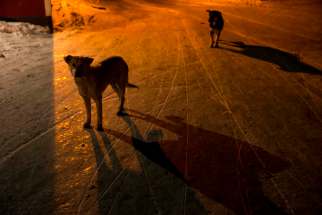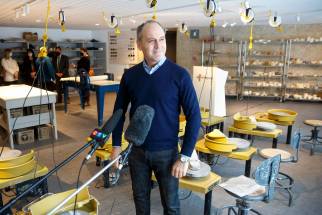Class is back in session at WAG Designed by the same architect behind Quamajuq, Art Studio will double its former program capacity of 25,000 kids a year
Read this article for free:
or
Already have an account? Log in here »
To continue reading, please subscribe:
Monthly Digital Subscription
$0 for the first 4 weeks*
- Enjoy unlimited reading on winnipegfreepress.com
- Read the E-Edition, our digital replica newspaper
- Access News Break, our award-winning app
- Play interactive puzzles
*No charge for 4 weeks then price increases to the regular rate of $19.00 plus GST every four weeks. Offer available to new and qualified returning subscribers only. Cancel any time.
Monthly Digital Subscription
$4.75/week*
- Enjoy unlimited reading on winnipegfreepress.com
- Read the E-Edition, our digital replica newspaper
- Access News Break, our award-winning app
- Play interactive puzzles
*Billed as $19 plus GST every four weeks. Cancel any time.
To continue reading, please subscribe:
Add Free Press access to your Brandon Sun subscription for only an additional
$1 for the first 4 weeks*
*Your next subscription payment will increase by $1.00 and you will be charged $16.99 plus GST for four weeks. After four weeks, your payment will increase to $23.99 plus GST every four weeks.
Read unlimited articles for free today:
or
Already have an account? Log in here »
Hey there, time traveller!
This article was published 16/11/2021 (1483 days ago), so information in it may no longer be current.
Six new art studios, replete with pottery wheels, kilns, easels and computer stations await the next generation of Manitoba artists at the Winnipeg Art Gallery.
All that was missing Tuesday morning were the creative minds to put the tools to work.
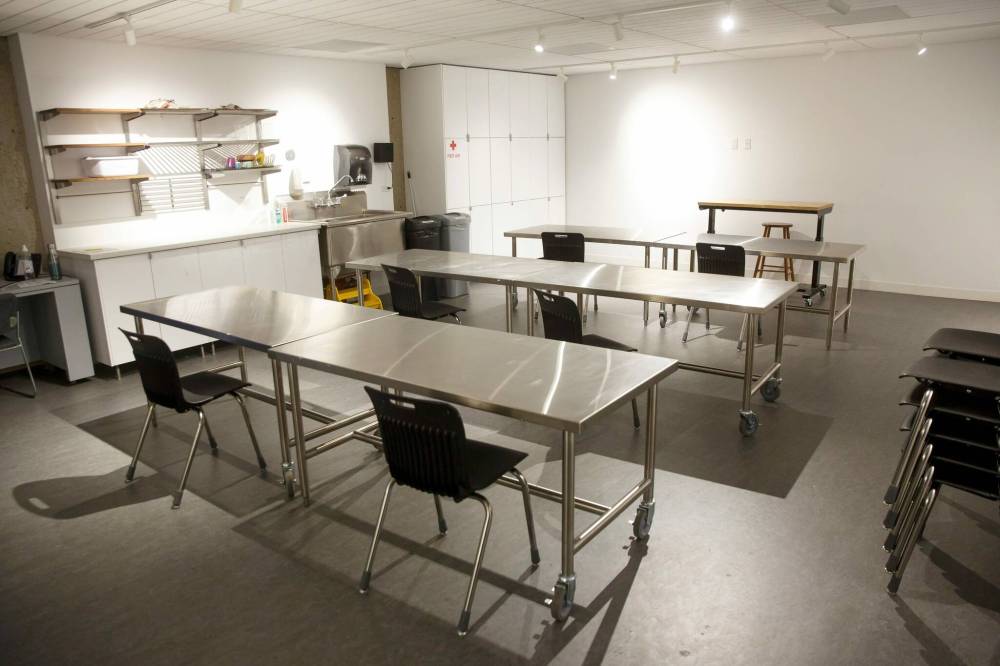
The gallery unveiled its WAG Studio at a press conference and announced the renewal of a partnership with the province to provide art-education opportunities for Manitoba students ranging from kindergarten to Grade 12.
The new studios are located on the top floor of Qaumajuq, which itself sits on the former site of the WAG’s studios, where prominent Manitoba artists such as Kent Monkman, Wanda Koop, Kenneth Lavallee, Jordan Van Sewell and Tony Tascona learned their craft or taught what they knew to others.
“The expanded learning spaces in which we’re standing in right now at WAG-Qaumajuq offer in-house and virtual programming that supports the Manitoba curriculum,” Stephen Borys, the gallery’s director and chief executive officer, said. “This agreement will ensure every student has the opportunity to become artstically literate, to experience artmaking and to think critically and creatively.”

The public will get a chance to check out the new spaces and demonstrations at an open house on Friday from 6-9 p.m. Registrations for the open house and for workshops are available online.
The WAG on Tuesday also began accepting registrations for its winter classes here.
Both Borys and Cliff Cullen, Manitoba’s education minister, stressed partnerships with Indigenous groups to provide artistic opportunities to Indigenous students but also for Indigenous artists to share their knowledge with schoolchildren, whether in a classroom setting or via the internet.
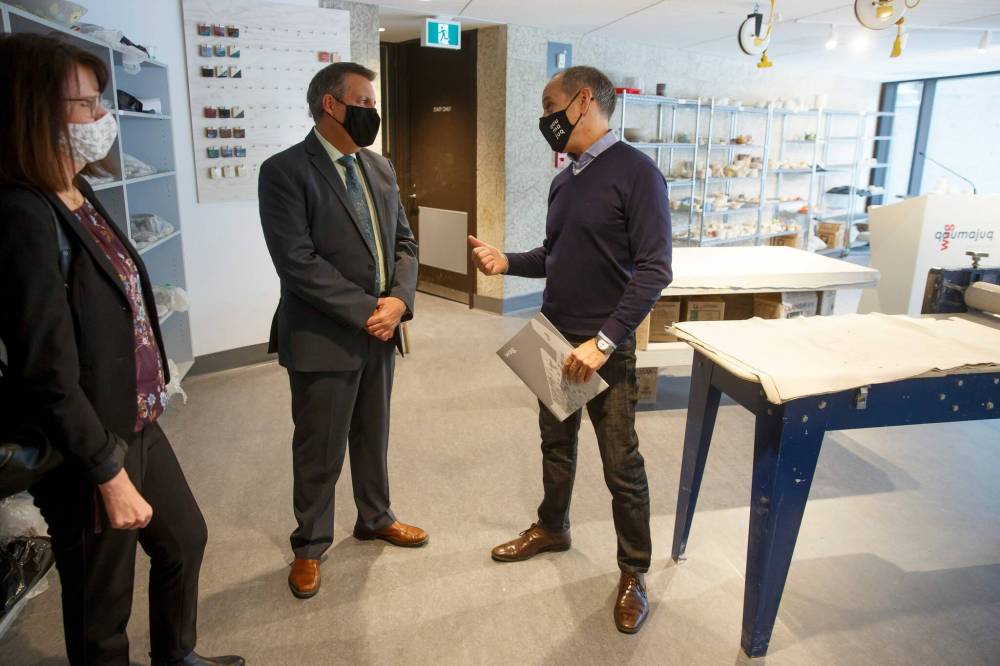
“We’re connecting with northern students who can tell the story about some of the art on screen at the same time with students in Manitoba or anywhere else in Canada. It’s a marvellous opportunity,” Cullen said. “It’s a real opportunity for education and what arts can do in terms with education as well.”
When the WAG unveiled plans for a new building devoted to Inuit art to be built where those studios stood, some local artists feared the loss of an 85-year tradition of art classes for Winnipeggers and Manitobans. 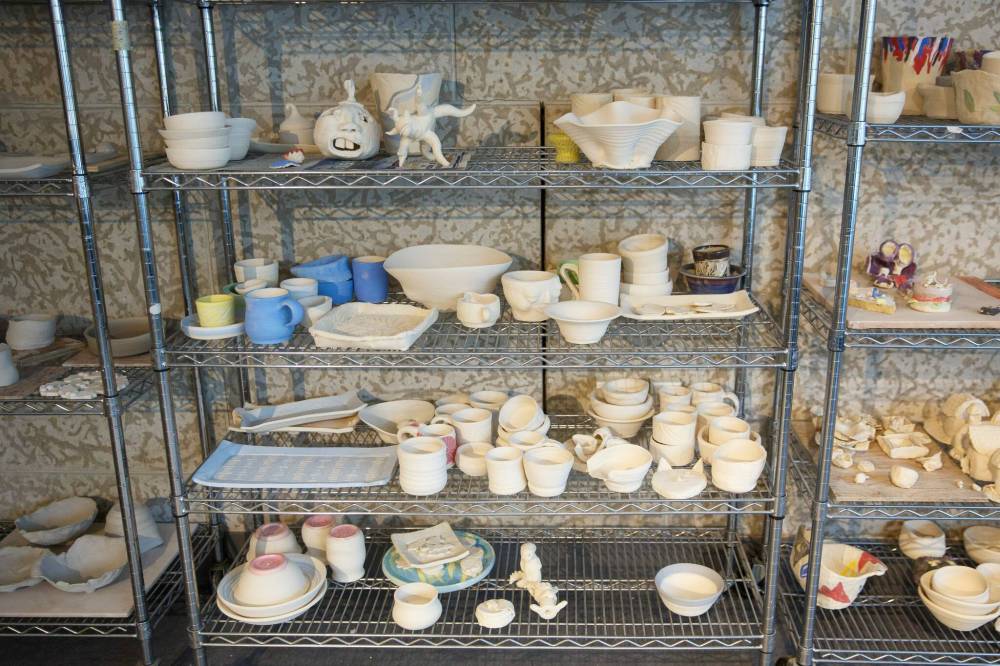
The studios have been incorporated into Qaumajuq and enlarged, and should more than address the early questions about the Qaumajuq project, Borys says.
“We have quadrupled the studio spaces at the WAG. On a good year, pre-COVID, we were able to welcome 25,000 kids a year. We can close to double that with activities and programs,” Borys said. 
While the areas were designed by Michael Maltzan, the California-based architect who designed Qaumajuq, students from the Interactive Digital Media Program at Sisler High School shared their ideas for the design of a new media laboratory that is part of the studio setup.
The new studios also provide easier access to different parts of the artistic process. Kilns, for instance, are just down the hall from the studio where potters’ wheels are located. 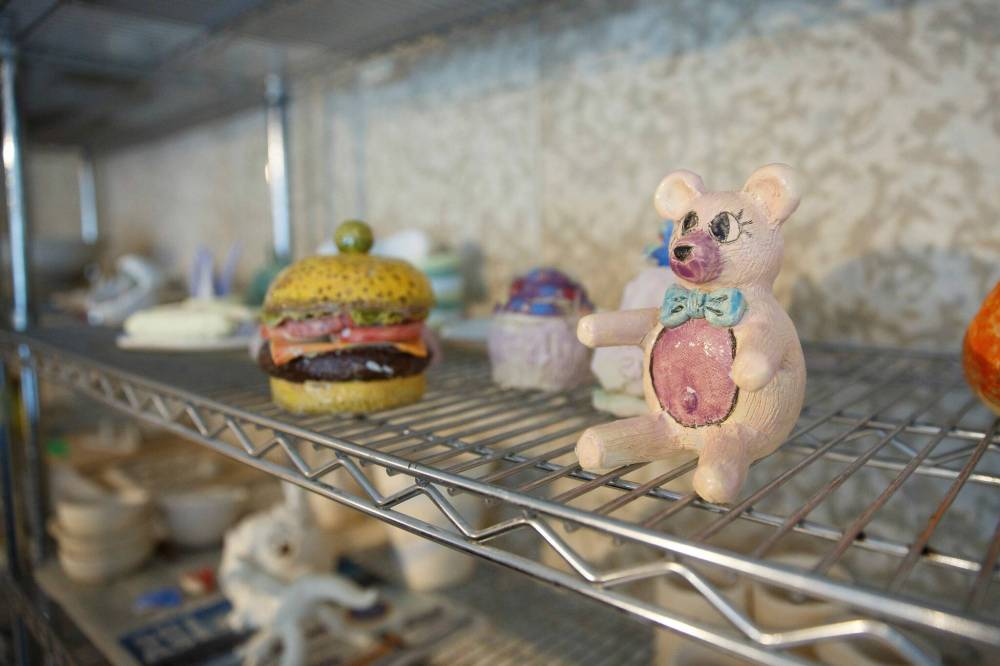
“This also allows us to work right in the WAG-Qaumajuq building, so we’re not in a separate building,” Borys says. “There’s a wonderful flow. A student comes in, visits an exhibition, does a program, a workshop, then comes in here, works in studios, goes back to the galleries. There’s a really fluid quality to the learning process that we didn’t have before.”
Alan.Small@winnipegfreepress.com
Twitter: @AlanDSmall

Alan Small has been a journalist at the Free Press for more than 22 years in a variety of roles, the latest being a reporter in the Arts and Life section.
Our newsroom depends on a growing audience of readers to power our journalism. If you are not a paid reader, please consider becoming a subscriber.
Our newsroom depends on its audience of readers to power our journalism. Thank you for your support.
History
Updated on Wednesday, November 17, 2021 8:04 AM CST: Fixes link


